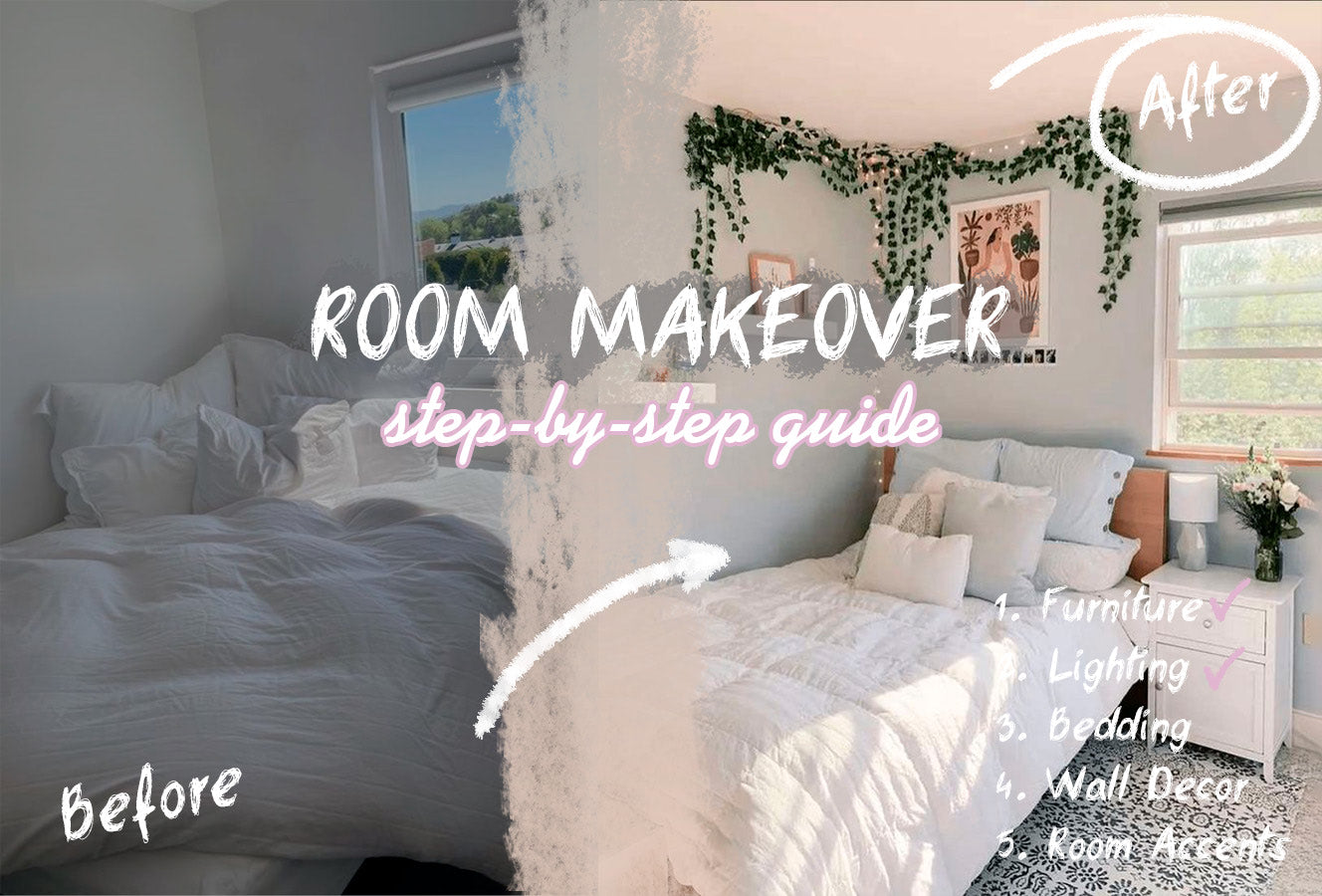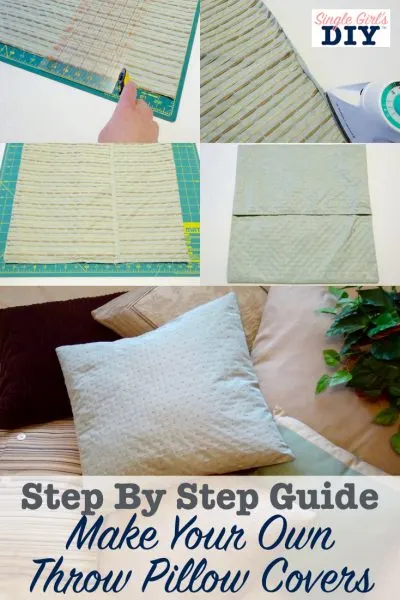How to make throw pillows, gather materials, cut fabric to size, sew edges, insert pillow form, and close the opening. Making throw pillows involves gathering materials, cutting fabric, sewing edges, inserting the pillow form, and closing the opening.
Additionally, choosing the right fabric is important, such as cotton and linen, as they are comfortable, durable, and easy to care for. Selecting the right fabric for throw pillows is crucial for the final product. From there, step-by-step instructions and tutorials can guide you through the process, ensuring a professional-looking result for your throw pillows.
Following these simple steps can make creating throw pillows an enjoyable project for beginners and experienced crafters alike.
How to Make Throw Pillows?

Choosing The Right Fabric
When making throw pillows, the first step is selecting the appropriate fabric. While quilting cotton may have attractive prints, opting for upholstery weight fabric is recommended for a professional finish.
When it comes to making throw pillows, choosing the right fabric is crucial. The fabric you select not only affects the appearance of your pillows but also determines their durability and comfort. In this section, we will explore the different types of fabrics suitable for throw pillows, considerations for fabric selection, and the best fabrics for pillow covers.
Types Of Fabric For Throw Pillows
When it comes to throw pillow fabrics, there are several options to consider. Each fabric type has its own unique characteristics that can enhance the overall look and feel of your pillows. Here are a few popular fabric choices for throw pillows:
| Fabric Type | Description |
|---|---|
| Cotton | Cotton is a versatile and widely used fabric for throw pillows. It is breathable, comfortable on the skin, and easy to care for. Additionally, cotton fabrics are available in various designs and patterns, making them suitable for different decor styles. |
| Linen | Linen is another natural fabric that works well for throw pillows. It has a luxurious appearance, a smooth feel, and excellent durability. Linen pillow covers can add an elegant touch to your living space. |
| Velvet | Velvet fabrics lend a touch of luxury to your throw pillows. They have a soft and plush texture, giving your pillows a cozy and inviting look. Velvet can be a great choice for adding a pop of color or texture to your decor. |
| Silk | Silk fabrics are known for their smooth and lustrous appearance. They add a touch of sophistication and elegance to your throw pillows. While silk can be a bit more delicate and require special care, it can create a stunning visual impact. |
Considerations For Fabric Selection
When selecting fabric for your throw pillows, there are a few important considerations to keep in mind. These factors can help you choose the fabric that best suits your needs and preferences. Consider the following:
- Durability: If your throw pillows will be heavily used, it’s important to choose a fabric that can withstand frequent handling and washing.
- Cleaning: Consider the ease of cleaning the fabric. Some fabrics may require dry cleaning, while others can be machine-washed.
- Color and pattern: The fabric you choose should complement your existing decor and add visual interest to your space. Consider the color scheme and patterns that will harmonize well with your surroundings.
- Texture: Think about the overall texture you want to achieve. Fabrics with different textures can add depth and dimension to your pillows.
- Budget: Consider your budget when selecting the fabric. Different fabric types come at various price points, so choose one that fits within your financial constraints.
Best Fabrics For Pillow Covers
While there is a wide range of fabrics you can use for throw pillow covers, some options have proven to be popular and reliable choices. These fabrics offer a combination of comfort, durability, and easy maintenance. Here are a few of the best fabrics for pillow covers:
- Cotton
- Linen
- Velvet
- Faux fur
- Outdoor fabrics
These fabrics ensure that your pillow covers not only look stylish but also provide a comfortable and long-lasting experience. Choosing the right fabric for your throw pillows is essential for creating visually appealing and durable pillow covers. Consider the fabric types, important factors for selection, and the best fabrics for pillow covers to make sure your pillows not only enhance your home decor but also provide comfort and longevity.
Materials Needed
Making throw pillows is a fun DIY project that can instantly spruce up any space! To get started, you will need the following materials:
Fabric
Choosing the right fabric is crucial for creating beautiful throw pillows. Opt for durable and visually appealing fabrics such as cotton, linen, or decorative upholstery fabric.
Thread
High-quality thread, preferably in a color that complements your fabric, is essential for strong and neat stitches. Choose a thread that is suitable for both hand-sewing and machine-sewing.
Pillow Form
To achieve the desired fullness and shape, select a pillow form that matches the dimensions of your pillow cover. Common sizes include 18×18 inches and 20×20 inches.
Scissors
A sharp pair of fabric scissors is necessary for precise cutting of the fabric. Make sure to keep them dedicated solely to fabric to maintain their sharpness.
Sewing Machine
A sewing machine will expedite the pillow-making process and create professional-looking seams. If you don’t have a sewing machine, you can still hand-sew your pillows, but it may take more time.
Step-by-step Guide
Creating your own throw pillows can be a fun and rewarding DIY project. With a few simple materials and basic sewing skills, you can make personalized throw pillows that add a touch of style to your home decor. Follow these step-by-step instructions to craft your own custom throw pillows.
Step 1: Cutting The Fabric
First, measure and cut the fabric for your throw pillow cover according to the size of your pillow form, leaving extra space for seam allowances. Use a fabric marker to mark the cutting lines, ensuring they are straight and accurate.
Step 2: Sewing The Edges
After cutting the fabric, pin the edges together with the right sides facing inwards. Use a sewing machine to sew along the pinned edges, leaving a small opening for turning the cover right side out and inserting the pillow form.
Step 3: Trimming The Corners
Trim the excess fabric from the corners to reduce bulkiness once the pillow cover is turned inside out. Be careful not to cut through the seams.
Step 4: Turning The Cover Right Side Out
Through the opening, carefully turn the fabric right side out to reveal the outer side of the pillow cover. Use a blunt object, such as a knitting needle, to gently push out the corners for a more defined shape.
Step 5: Inserting The Pillow Form
Insert the pillow form through the opening, ensuring it fits snugly into the cover. Take your time to position the form evenly within the cover to achieve a smooth and plump appearance.
Step 6: Sewing The Opening Closed
Once the pillow form is inserted, carefully hand-stitch the opening closed using a hidden stitch or slip stitch to create an invisible closure.
Step 7: Finishing Touches
To complete the process, give your throw pillow a final fluff and smooth out any wrinkles for a polished look. Your custom throw pillow is now ready to add a cozy and stylish accent to your living space.

Additional Tips For Success
Looking to make throw pillows? Follow these additional tips for success: Start by choosing the right fabric, consider cotton or linen for a comfortable and easy-to-care-for option. Then, carefully cut out the front and back pieces and sew the edges, ensuring a clean finish.
Finally, insert the pillow form and sew the opening closed. Get ready to enjoy your handmade throw pillows!
Making your own throw pillows can be a fun and rewarding DIY project. To ensure success with your throw pillow creations, consider the following additional tips:
Using A Pattern
Using a pattern can help you achieve accurate and professional-looking throw pillows. Look for a pattern that suits your design preferences and skill level. You can find a wide variety of pillow patterns online or in craft stores.
Adding Decorative Elements
If you want to take your throw pillows to the next level, consider adding decorative elements. This could include embellishments like buttons, lace, pom-poms, or embroidery. These decorative accents can add visual interest and make your throw pillows unique.
Experimenting With Different Shapes And Sizes
Don’t be afraid to experiment with different shapes and sizes for your throw pillows. While square and rectangular pillows are classics, you can also try making round, heart-shaped, or even animal-shaped pillows. Mixing and matching different sizes and shapes can create a more visually dynamic look when arranging your pillows.
Caring For Your Throw Pillows
To ensure your throw pillows last for a long time, it’s essential to care for them properly. Make sure to check any care instructions for the fabric you use, but as a general rule, most throw pillows can be gently hand washed or spot cleaned. Avoid using strong detergents or bleach, as this can damage the fabric. Regular fluffing and rotating of your throw pillows can also help maintain their shape and loft over time.

Conclusion
Making your own throw pillows can be a fun and rewarding project. By following simple steps such as selecting the right fabric, cutting and sewing the pieces, and inserting the pillow form, you can create unique and personalized throw pillows for your home.
Whether you prefer a basic design or want to try more advanced techniques like zippered pillows, there are plenty of tutorials and resources available to guide you through the process. So, why not give it a try and add a touch of creativity to your home decor?

